Shipping container homes have gained popularity for their affordability, flexibility, and unique designs. Many homeowners are drawn to the idea of transforming these sturdy metal boxes into cozy and modern living spaces. Understanding the common mistakes can help new homeowners avoid costly errors.
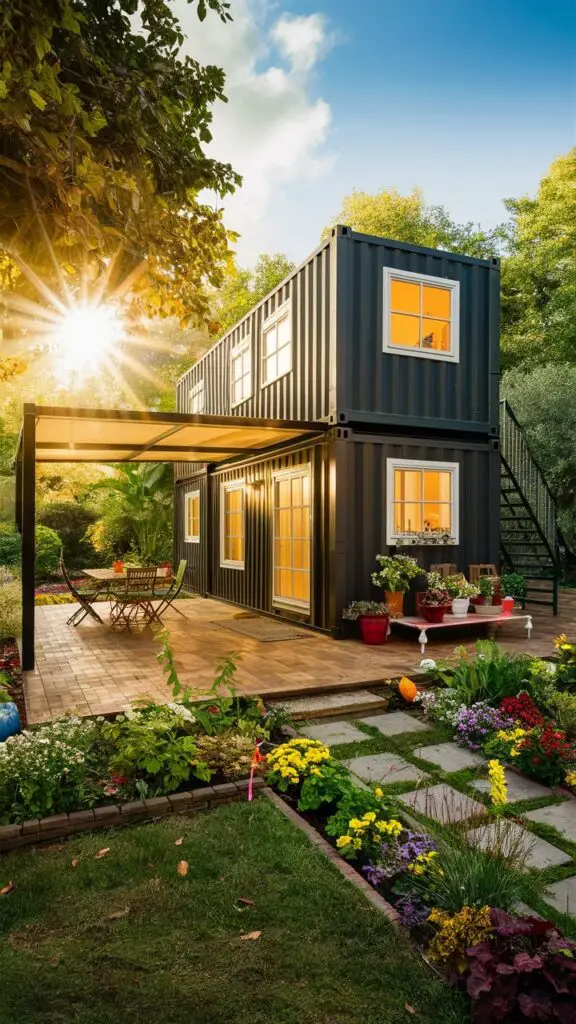
Designers who specialize in container homes have identified several behaviors that can hinder the building process and result in less efficient homes. By learning from their experiences, new homeowners can create beautiful and functional container homes without unnecessary difficulties.
1) Using Incompatible Materials
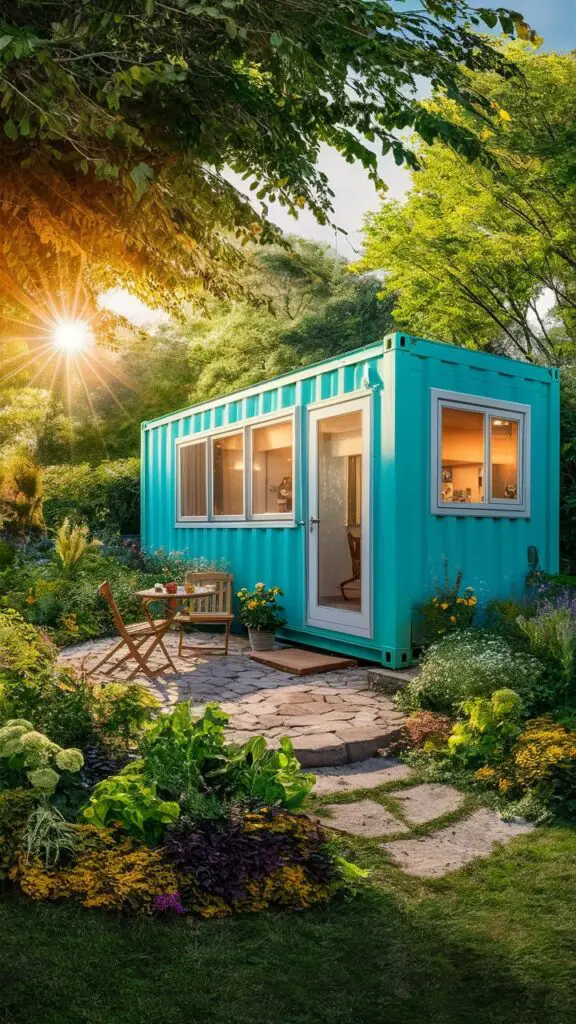
Choosing the right materials for a shipping container home is crucial. Not all materials work well with the metal structure of containers. For example, certain types of insulation can trap moisture, which leads to rust and structural damage.
Concrete and metal have different expansion rates. Using materials that expand and contract differently can cause cracks and gaps in walls and floors. This can compromise the integrity of the home.
Avoid using untreated wood for long-term construction. Metal surfaces in shipping containers can cause the wood to rot if there’s no proper barrier between them.
It’s important to choose materials that are compatible with metal. This reduces maintenance and future repair costs. Materials like metal studs and specialized insulation are often better choices.
Making sure that all materials are compatible ensures the container home remains durable and safe. This also helps in maintaining energy efficiency and comfort. Consulting with experts during the planning phase can help avoid these issues.
2) Overloading the Structure
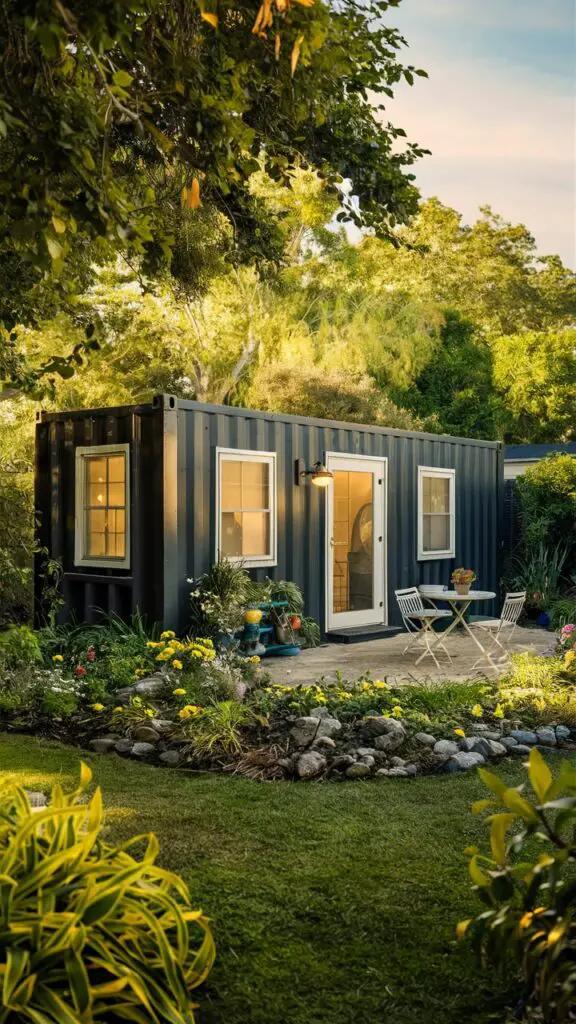
One common mistake new container home designers make is overloading the structure. Shipping containers are strong, but they have limits. Putting too much weight on the roof or walls can cause structural issues.
Even though the sides and corners are sturdy, they aren’t meant to hold heavy loads. Placing heavy items on the roof, like solar panels or green roofs, without proper reinforcement can lead to damage.
It’s important to understand the weight distribution of a container home. Using multiple containers requires a well-thought-out plan to balance the load. Poor planning can result in an unsafe living environment.
Reinforcement options are available and should be used when adding extra weight. Consulting with a structural engineer can provide valuable insights and prevent costly mistakes.
Ensuring that the base and foundation are strong enough to support the entire structure is crucial. Don’t overlook this step, as it keeps the home stable and safe. For more tips on reinforcing container homes, check out this resource.
By respecting the weight limits of shipping containers, new homeowners can avoid unnecessary problems and maintain the integrity of their homes. Understanding these limitations helps ensure a safe, long-lasting living space.
3) Neglecting Insulation Requirements
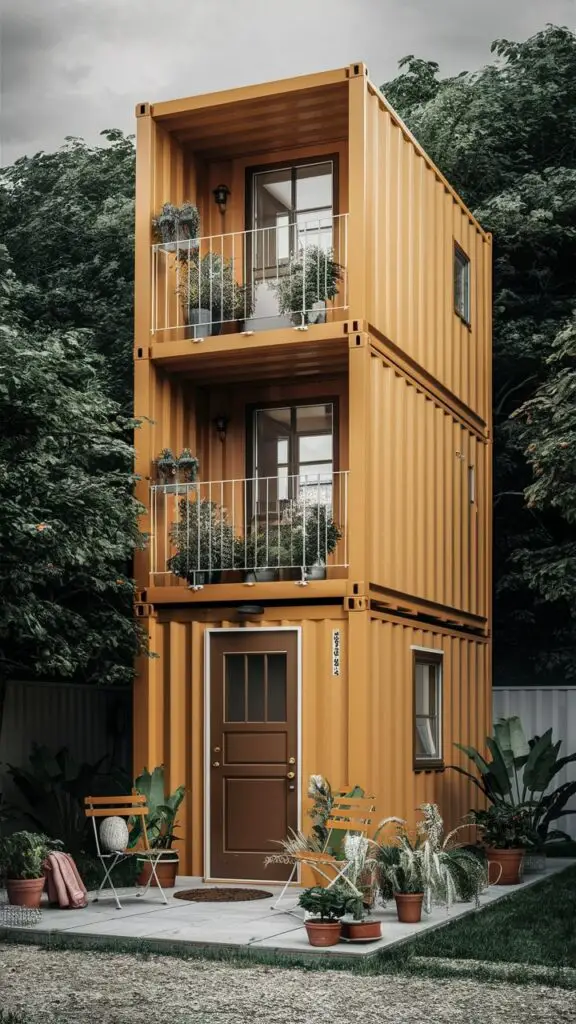
Many new container homeowners overlook the importance of proper insulation. Insulation is crucial for maintaining comfortable temperatures inside, regardless of the weather outside. Metal containers heat up quickly in the summer and cool down just as fast in the winter.
Ignoring insulation can lead to severe temperature fluctuations. This makes the living space uncomfortable and can drive up heating and cooling costs. Insulating correctly can prevent this issue.
Some underestimate the amount of insulation needed. A single layer might not be enough, especially in extreme climates. In regions with very hot summers or cold winters, extra layers of insulation are often necessary.
Another common mistake is choosing the wrong type of insulation. There are various options like spray foam, rigid foam, and batt insulation. Each has its benefits and drawbacks. Decisions should be based on climate, budget, and specific needs.
Proper insulation is not only about material but also installation. Gaps and poorly insulated corners can still let in heat or cold. Ensuring every part of the container is well-insulated is essential for efficiency.
Lastly, homeowners should not forget about moisture control. Metal containers can accumulate condensation, leading to mold. Installing a vapor barrier alongside insulation can help manage this problem effectively.
4) Ignoring Local Building Codes
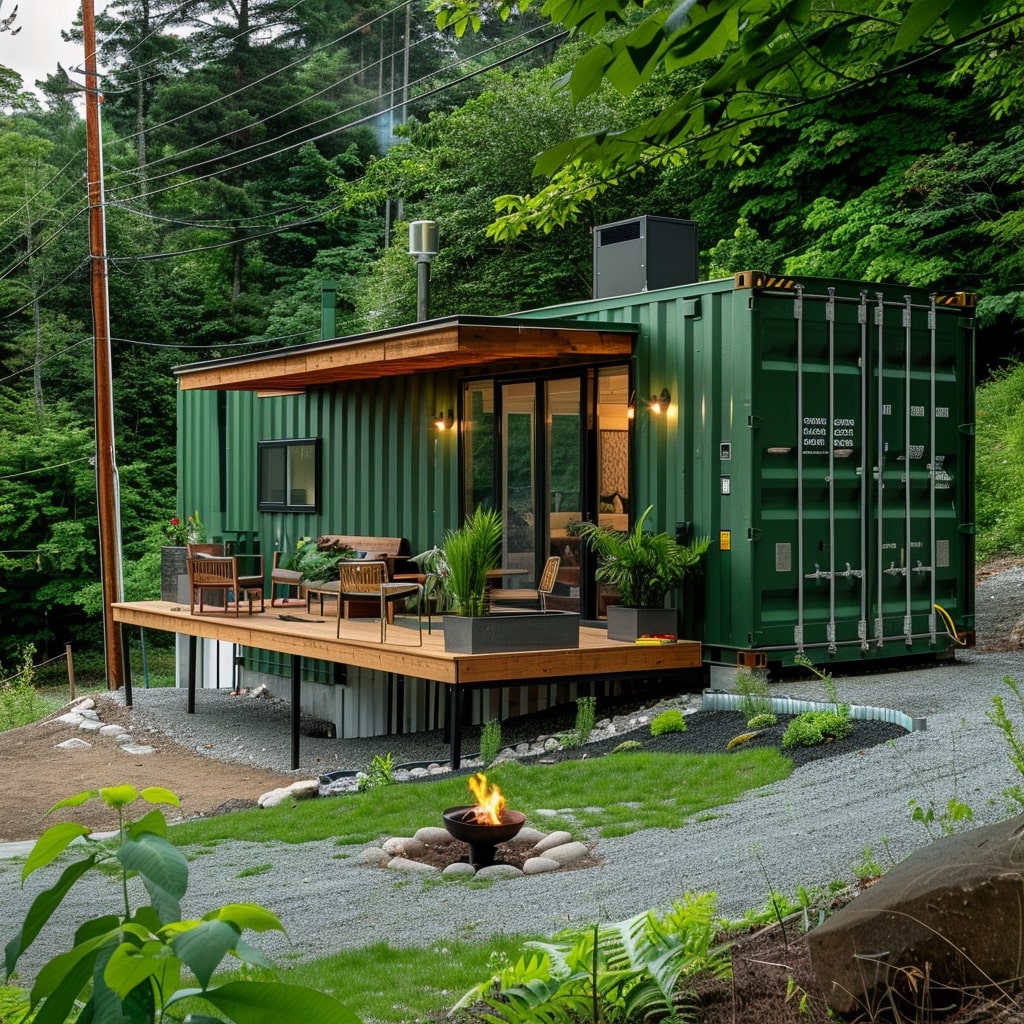
When planning a container home, it is crucial to pay attention to local building codes. Each area has its own set of rules and regulations that must be followed. Ignoring these can lead to legal and financial troubles.
Building codes ensure that homes are safe and up to standard. In some regions, container homes may face stricter regulations due to their unique structure. It’s important to research what is required in your location.
Permits are often needed for construction. Failing to obtain these can result in fines or even having to dismantle the home. This step can be time-consuming, but it’s necessary to avoid future problems.
Hiring professionals who understand local codes can help. An experienced contractor will know what permits and inspections are required. They can guide homeowners through the process to ensure compliance.
Ignoring local building codes can also affect insurance. Some insurance companies might refuse coverage if the home doesn’t meet all regulations. It is important to think about this before starting construction.
Finally, following the codes ensures neighborhood harmony. A compliant home will blend in better with its surroundings and be welcomed by nearby residents. This makes for a better living environment for everyone.
5) Skipping Professional Inspections
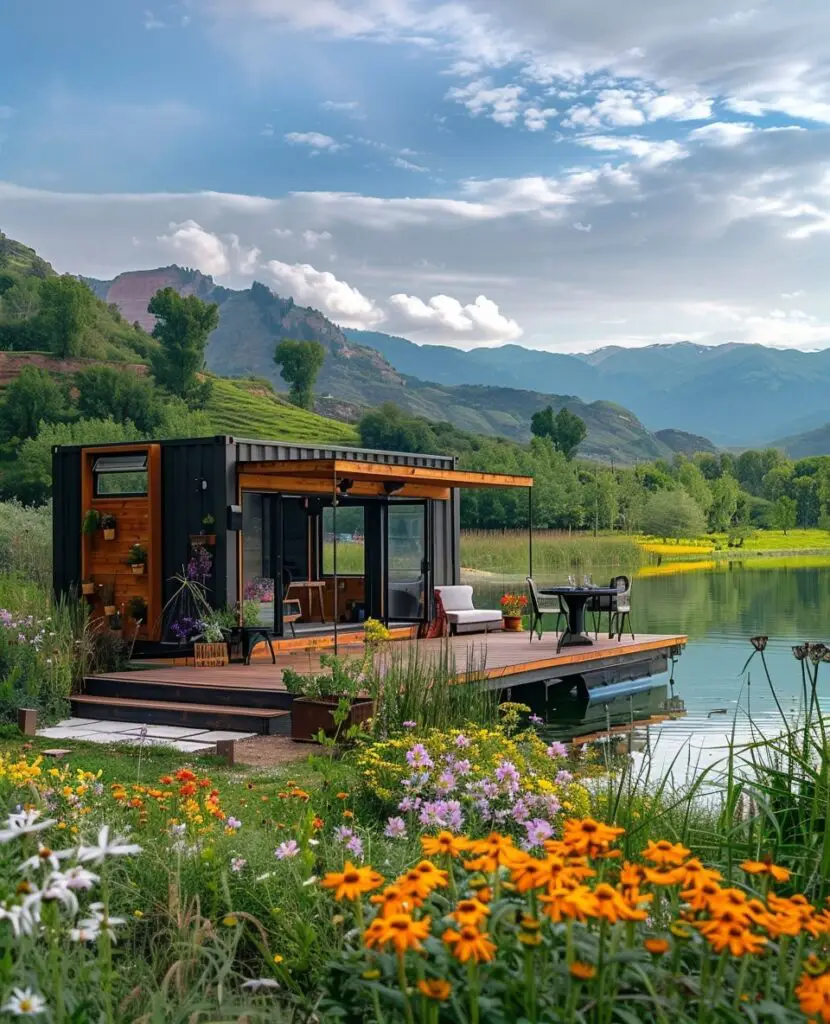
Skipping professional inspections is one of the biggest mistakes new container homeowners can make.
Professional inspectors have the expertise to identify issues that can be missed by the untrained eye. Problems with the structure, insulation, and plumbing can be costly if not addressed early.
Relying on personal inspections or DIY skills often leads to overlooked problems. Inspectors use specialized tools to check for hidden damages and potential future issues.
An inspector can identify potential hazards like mold, rust, and structural weaknesses. They can also verify if the electrical and plumbing systems are up to code, ensuring the home’s safety.
Skipping this step can mean higher repair costs later. Investing in a professional inspection from the start is a smart decision for a secure and safe container home.
6) Choosing Aesthetic Over Functionality
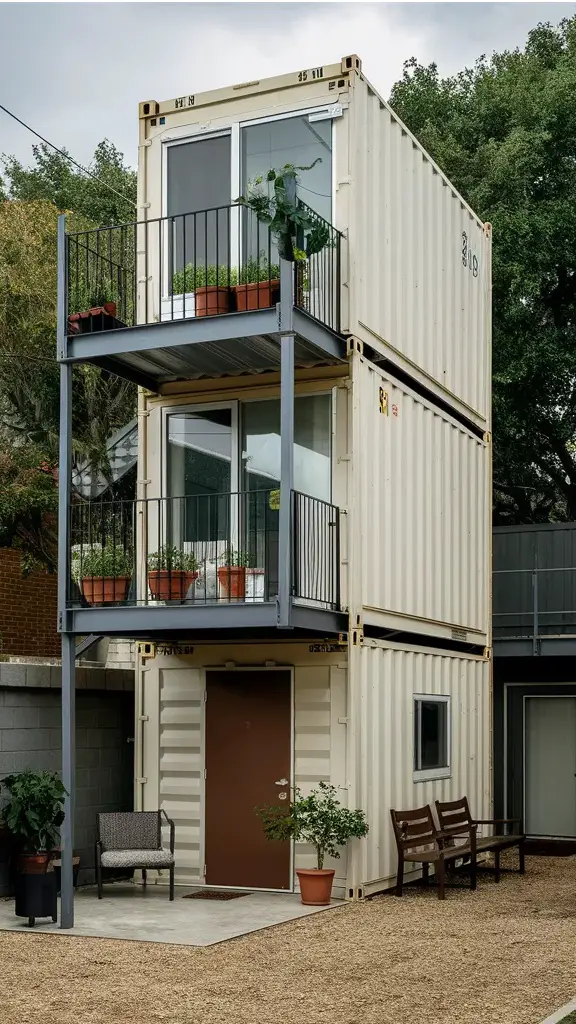
Container home designers often stress the importance of balancing beauty with practicality. New homeowners sometimes get caught up in the visual appeal, neglecting day-to-day usability.
For example, homeowners may prioritize sleek, modern furniture that looks great in photos, but isn’t comfortable for daily use. It’s important to choose pieces that are both stylish and functional.
Another common mistake is installing overly large windows to capture scenic views. While they look impressive, big windows can lead to issues with heating and cooling. Proper insulation and energy-efficient options should be considered.
Floor plans can also be too focused on open, airy spaces, sacrificing storage and room separation. This can make living spaces feel cluttered and limit privacy.
Lastly, opting for high-maintenance materials for counters or floors might look elegant, but can be impractical over time. Durable and easy-to-clean materials will stand the test of time.
To avoid these pitfalls, new homeowners should consider designs that offer both form and functionality. An efficient and livable home is the ultimate goal.
7) Overlooking Ventilation Needs

Proper ventilation is crucial in a shipping container home. Container homes are built with tight seals, which means that without careful planning, these homes can suffer from poor air quality and mold.
Effective ventilation strategies can prevent issues like condensation and rust. Homeowners should consider mechanical ventilation and dehumidification to keep the indoor air clean and dry.
Foundation ventilation is another important aspect. Ensuring that air can flow beneath the home helps in maintaining structural integrity and comfort. Neglecting ventilation can lead to a variety of problems, making this a critical aspect of container home design.
Ventilation goes hand-in-hand with insulation. Properly insulated homes need effective ventilation to balance indoor temperatures and maintain a healthy environment. For more insights, check out the article on ventilation essentials.
Ignoring this aspect can lead to costly repairs and health issues. It’s essential to plan and implement robust ventilation systems from the start. This will ensure a comfortable, durable, and healthy living space.
8) Underestimating Utility Connections

When building a shipping container home, it’s common to overlook the complexity of utility connections. Connecting water, gas, electricity, and sewage to a container home can be more challenging than with traditional homes.
The location of the property greatly affects the ease of connecting utilities. Remote areas might not have ready access to essential services, requiring significant groundwork.
Ensuring that utility connections are planned early in the design phase is crucial. This foresight can avoid costly modifications later. Container homes require reliable access to utilities to be fully functional and comfortable.
Moreover, it’s important to comply with local regulations and codes. Missteps can lead to delays and additional expenses. Always consult professionals to handle utility connections properly.
Research and understand the utility connections for new homes to make informed decisions. Proper planning prevents disruptions long after the home is built.
Homeowners must realize that utility connections are foundational to the home’s operation. Ignoring this aspect can lead to significant issues down the road. Always prioritize these connections in your build plan.
9) Using All Floor Space for Living

Using all available floor space for living areas can make a container home feel cramped. Designers recommend leaving some space for other purposes.
Incorporate storage solutions like built-in shelves or under-stair storage. This helps reduce clutter and keeps living areas free and open.
Consider multifunctional furniture. For example, a sofa bed can serve as both seating and a sleeping area. This approach maximizes use without overcrowding the space.
Including a mix of living, storage, and utility spaces creates a more balanced home environment. Efficient use of space helps maintain a comfortable and organized living area.
Avoid turning every inch into living space. Instead, focus on smart design choices that enhance the overall feel and functionality of the home.
10) Neglecting Maintenance Requirements

Neglecting maintenance can lead to significant problems in container homes. Regular checks and timely repairs are crucial to avoid costly damage. Without proper care, rust and corrosion can weaken the structure, leading to safety issues.
Proper insulation and climate control are essential for maintaining a comfortable living environment. Ignoring these aspects can result in high energy bills and an uncomfortable home.
Foundation and structural integrity should be monitored continuously. Hiring professionals to inspect and address any issues ensures the longevity of the home. Skipping these steps can lead to serious consequences.
Following local building codes and regulations is important. Ignoring these can result in legal problems and fines. Homeowners should familiarize themselves with these requirements to avoid future headaches. For more information, you can check out an article on common mistakes in container house maintenance.
Failing to maintain plumbing and electrical systems can also cause major issues. Regular inspections help identify and fix small problems before they become larger and more expensive.
Regular cleaning and repainting help maintain the aesthetic appeal and prevent deterioration. A consistent maintenance schedule helps in identifying problems early and keeps the home in good condition.
Lastly, it is advisable to keep a log of all maintenance activities. This practice helps in tracking what has been done and when, ensuring nothing gets overlooked. Regular updates will keep the home in optimal condition for years to come. For a detailed look at potential problems and their solutions, see the article on shipping container home problems.
Common Design Mistakes
Designing a shipping container home requires careful attention to local regulations, proper insulation, ventilation, and structural integrity. Failure to address these areas can create major problems in functionality and safety.
Ignoring Local Building Codes
One of the biggest mistakes new container homeowners make is ignoring local building codes. Each area has specific regulations that must be followed.
Not adhering to these can result in legal issues and delays. Permits are often required for structural changes, electrical work, and plumbing. Before construction, it’s crucial to research and understand these local laws. Consulting with professionals familiar with the codes is highly recommended to avoid unexpected complications.
Poor Insulation and Ventilation Choices
Proper insulation and ventilation are key to making a container home livable. Standard shipping containers are metal boxes, making them prone to extreme temperatures. Without good insulation, the interior can become unbearably hot in the summer and freezing in the winter.
Choosing the right insulation material is essential to maintain a comfortable temperature. Additionally, ventilation must be accounted for to avoid dampness and mold. Installing proper ventilation systems helps maintain air quality and prevents moisture buildup. Neglecting these aspects can lead to an uncomfortable and unhealthy living environment.
Overlooking Structural Integrity
A common misconception is that shipping containers are indestructible. However, modifying them without considering structural integrity can lead to severe issues. Cutting large openings for windows or doors can weaken the container’s structure.
It’s important to reinforce these areas properly. The choice between standard and high cube containers also matters. High cube containers provide extra height, which can be beneficial for insulation and headroom. Consulting with structural engineers ensures that the modifications do not compromise safety. Ignoring these factors can result in dangerous living conditions.
Maximizing Space Efficiency
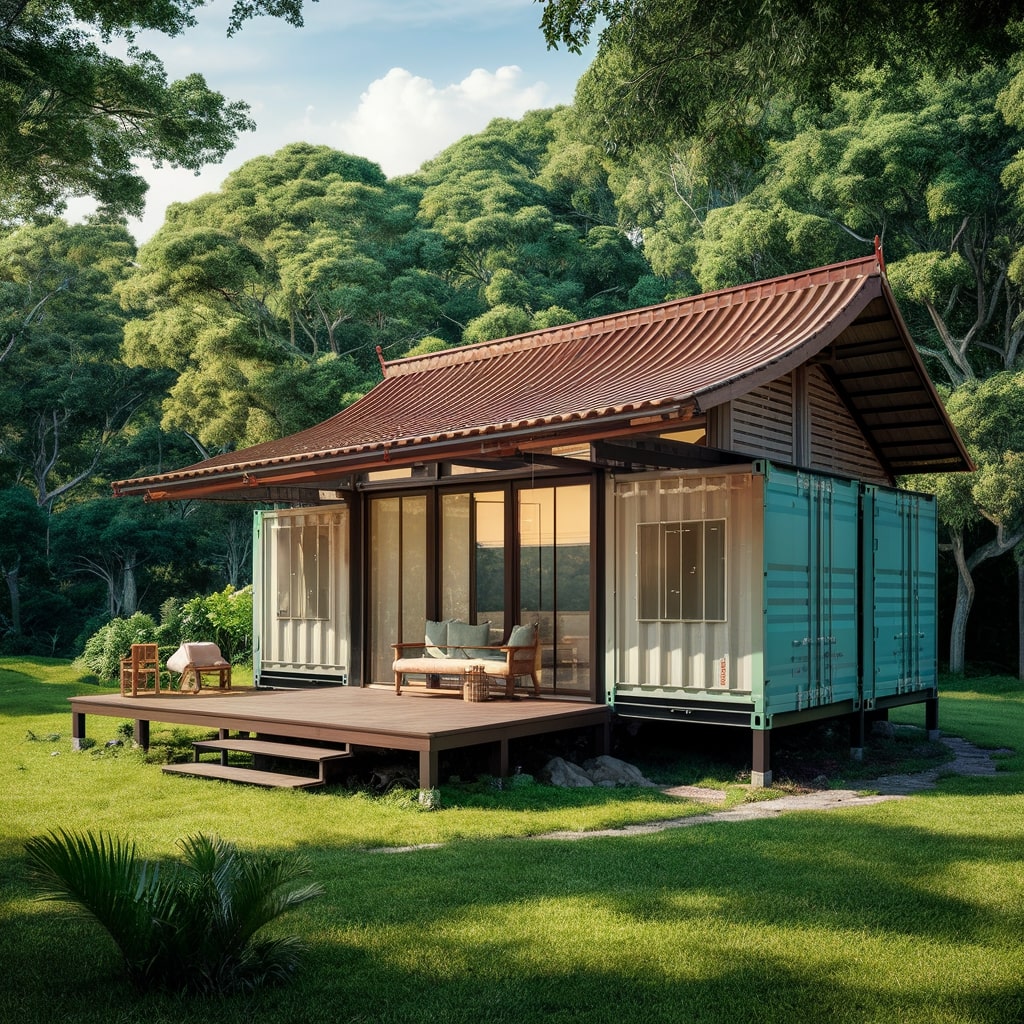
Designing a container home involves making the most of limited space. This can be achieved by planning an effective layout and using multi-functional furniture pieces.
Effective Layout Planning
Effective layout planning is crucial for container homes due to their compact size. Start by measuring all dimensions and sketching a rough plan. Decide on the placement of key elements like the kitchen, bathroom, and sleeping area.
Consider an open-concept design to create a more spacious feel. Remove unnecessary interior walls and use strategic room dividers. Think vertically by incorporating loft spaces or elevated beds to free up floor areas for other uses.
Make sure to include plenty of natural light. Large windows and glass doors can make even small spaces feel more open and inviting.
Multi-Functional Furniture
Using multi-functional furniture is key to maximizing space in a container home. Look for furniture that serves more than one purpose. Examples include a sofa bed, a dining table that doubles as a workspace, and ottomans with storage inside.
Consider foldable or collapsible furniture that can be tucked away when not in use. Murphy beds, which fold up into the wall, are a popular choice. Chairs and tables with built-in storage can also help reduce clutter.
Investing in custom-built furniture tailored to the specific dimensions of your container home can result in better space utilization and a more cohesive design.
Aesthetic Considerations

Designing a container home involves balancing industrial elements with cozy touches and choosing color schemes that enhance the space.
Balancing Industrial and Cozy Elements
One major consideration is how to blend the industrial feel of the containers with warm, inviting features. Containers have a rigid and metallic look, so adding natural materials like wood and textiles can soften the overall appearance.
Combine materials: Use wood, stone, and brick accents to contrast the metal structure. This adds warmth without compromising the industrial charm.
Furniture and décor: Opt for cozy furnishings such as plush sofas, soft rugs, and layered textiles. Varying textures can make a significant difference.
Lighting: Utilize both natural and artificial lighting. Large windows maximize daylight, while soft indoor lighting fixtures can create a homey atmosphere.
Choosing Appropriate Color Schemes
Color schemes in a container home can transform the space, making it feel more spacious and inviting. Lighter colors are generally the best choice, as they can make compact areas seem larger.
Neutral base: Start with a neutral palette. Shades of white, grey, or beige act as a canvas for other design elements.
Accent colors: Introduce pops of color through accessories like cushions, artwork, or feature walls. This prevents the space from looking monotonous.
Consistent theme: Maintain a consistent color theme throughout the home to create a cohesive look. Use complementary colors to tie different spaces together.
By paying attention to these details, the design of a container home can be both aesthetically pleasing and comfortable.
